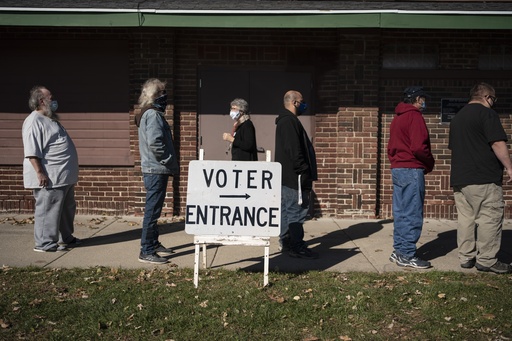
WASHINGTON — Wisconsin is known for its tightly contested presidential elections, with past margins of victory consistently falling below a percentage point in the elections of 2020, 2016, 2004, and 2000. This trend could very well continue on this coming Election Day.
Former President Donald Trump, a Republican, and Vice President Kamala Harris, a Democrat, are actively vying for Wisconsin’s 10 electoral votes. They are making regular appearances throughout the state, particularly in populous areas such as Milwaukee, Madison, and Green Bay.
In 2016, Wisconsin was part of the “blue wall” that Trump managed to breach after nearly 30 years of voting Democratic. However, in 2020, Joe Biden reclaimed the state with a slender margin of approximately 20,000 votes from a total of nearly 3.3 million cast.
In the U.S. Senate race, Democratic incumbent Tammy Baldwin is seeking a third term against Republican Eric Hovde. Baldwin, who faces a well-funded, Trump-endorsed opponent, is among a group of vulnerable Senate Democrats aiming to retain their seats. Collectively, the campaigns of Baldwin and Hovde, along with their supporting allies, have invested over $160 million in advertising, according to campaign ad tracking sources.
Democrats are optimistic about improving their standing in the state legislature thanks to new district maps. Nearly half of the 33 state Senate seats, as well as all 99 state Assembly seats, will be contested this election cycle. This year marks a particularly competitive campaign for Democrats in the Assembly, greatly aided by the newly drawn districts and various retirements among incumbents.
Another focal point for Wisconsin voters will be a statewide ballot measure aimed at amending the state constitution to explicitly prohibit noncitizens from voting in state elections. Currently, noncitizens are already barred from federal elections across the nation, and no state allows them to vote in state races. However, a few municipalities in different states permit noncitizens to participate in local elections, prompting Republican-led efforts to abolish this practice entirely.
Here’s what to keep in mind for the upcoming elections in Wisconsin:
Election Day is set for Nov. 5, with polls closing at 9 p.m. ET. The presidential electoral votes will go to the statewide winner. Key candidates include: Harris (D), Trump (R), Randall Terry (Constitution), Chase Oliver (Libertarian), Jill Stein (Green), Claudia De la Cruz (Party for Socialism and Liberation), Cornel West (Justice for All), and Robert F. Kennedy Jr. (We the People). In the U.S. Senate race, it’s Baldwin (D) up against Hovde (R) and two additional candidates. Voters will also encounter Question 1, which seeks to require citizenship for voting rights.
For other notable races, constituents will also be watching contests within the U.S. House, state Senate, and state Assembly.
When it comes to results reporting, Wisconsin typically presents a mixture of ballots from Election Day along with early votes in its initial reports on election night. During the recent April presidential primaries, more than a third of counties directly reported most or all of their voting results. However, larger counties, which are often Democratic strongholds, took longer to report initial counts. This lag can significantly impact the estimated timeline for determining the overall outcome of close races.
In the 2016 election, Hillary Clinton triumphed in Milwaukee County with 66% of votes but ultimately lost to Trump, demonstrating how concentrated successes in Democratic areas do not guarantee overall state victories. Conversely, Biden improved on Clinton’s performance in Brown County during the 2020 election, a vital area for Trump.
For Trump to reclaim Wisconsin, he will need to garner strong support from rural regions and suburban counties around Milwaukee, while Harris is expected to gather significant votes from urban centers.
Recounts in Wisconsin are not automatic, but candidates may request one if the margin of victory falls below one percentage point. Election results will continue to be updated until all potential ballots and recounts are accounted for. This means winners might not be declared immediately after polls close, particularly in closely contested races.
In the past presidential election in 2020, Biden received 50% of the votes compared to Trump’s 49%. Wisconsin had a registered voter count of over 3.5 million as of September 1, 2024, and saw a remarkable voter turnout of 84% during the last election.
Pre-Election Day voting trends suggest that around 61% of total votes were cast prior to Election Day in 2020, contrasting sharply with only 29% in 2022. As the 2024 election approaches, these turnout dynamics will continue to be closely observed.
Election result reporting has varied in pace in previous cycles, with the first votes being tallied and released at various times. This history suggests that while some results may appear quickly on Election Night, final tallies—especially in competitive races—may take longer to confirm.
